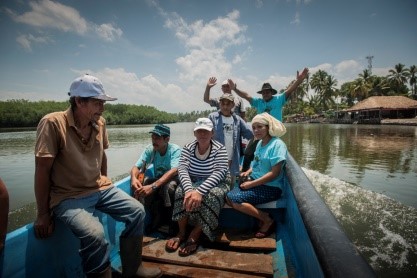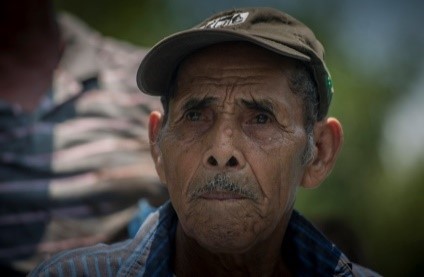


There are several governance challenges in río Paz, such as institutional weak presence and weak institutional coordination which drives to the mismanagement of the river and the coastal ecosystems.
IUCN, UNES and local communities proposed a buiding block to ensure the full implementation of the solution. The process implies strenthening and articulation of governance local structurers by:
- identification of leaders
- social awareness
- consolidation of local groups such as the Istatén Association, the Aguacate Microbasin Committee, women's groups and water boards.
Governance structures develop integral operative working plans, that respond to local needs and improve socio-political and advocacy capacities. The advocacy seeks to (i) persuade the Ministry of Environment and Natural Resources (MARN) to establish sanctions for those who incur in prohibited fishing practices, and to demand greater responsibility in the use of water and management of liquid waste by the sugar industry; and (ii) request the Ministry of Agriculture (MAG) to monitor the water use of this industry (i.e. the permits extended) and to introduce water rates that are proportional to the volume used. The case has already been brought forth to the Environmental Court and is waiting for a resolution.
- Presence and trust of the local partner NGO, UNES in the project region.
- Collaborative and facilitative approach with communities - as partners instead of beneficiaries.
- Learning from communities
- Strengthening of local groups. Local groups have been key actors in the work of identifying community problems, and then planning and implementing the solutions through collective actions.
- For ecosystem restoration practices to be successful and sustainble, they must be accompanied by advocacy and dissemination actions that reinforce these EbA initiatives. These actions are particularly necessary in the lower basin of the Paz River, due to the existance of the environmental conflicts in the territory around water and the variety of actors involved.
- Organizing an advocacy agenda is a powerful tool for communities, especially if it contains specific proposals that aim to achieve the implementation of existing environmental regulations.
- Stakeholders need permanent negotiation spaces for ensuring continuous dialogue on natural resources.